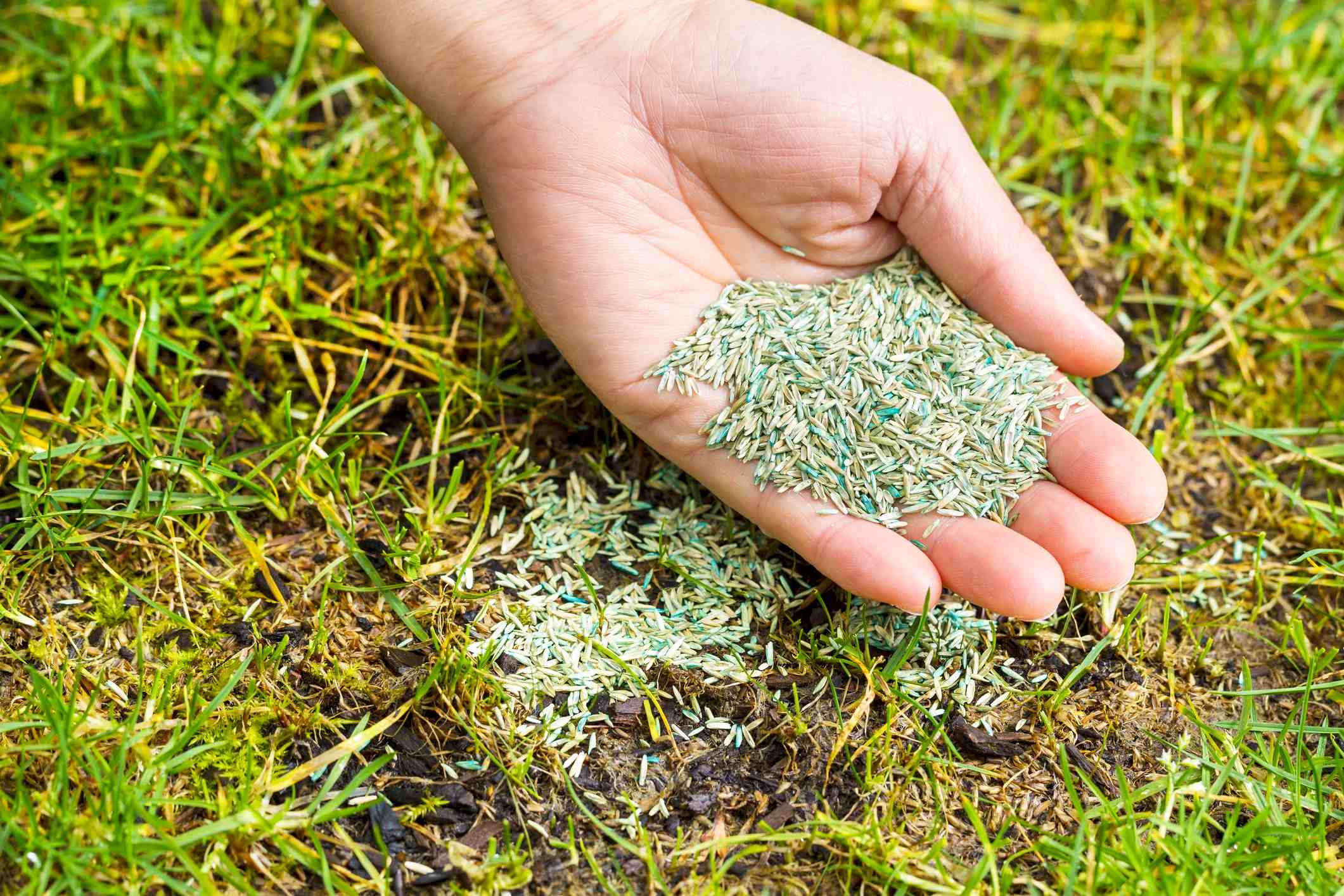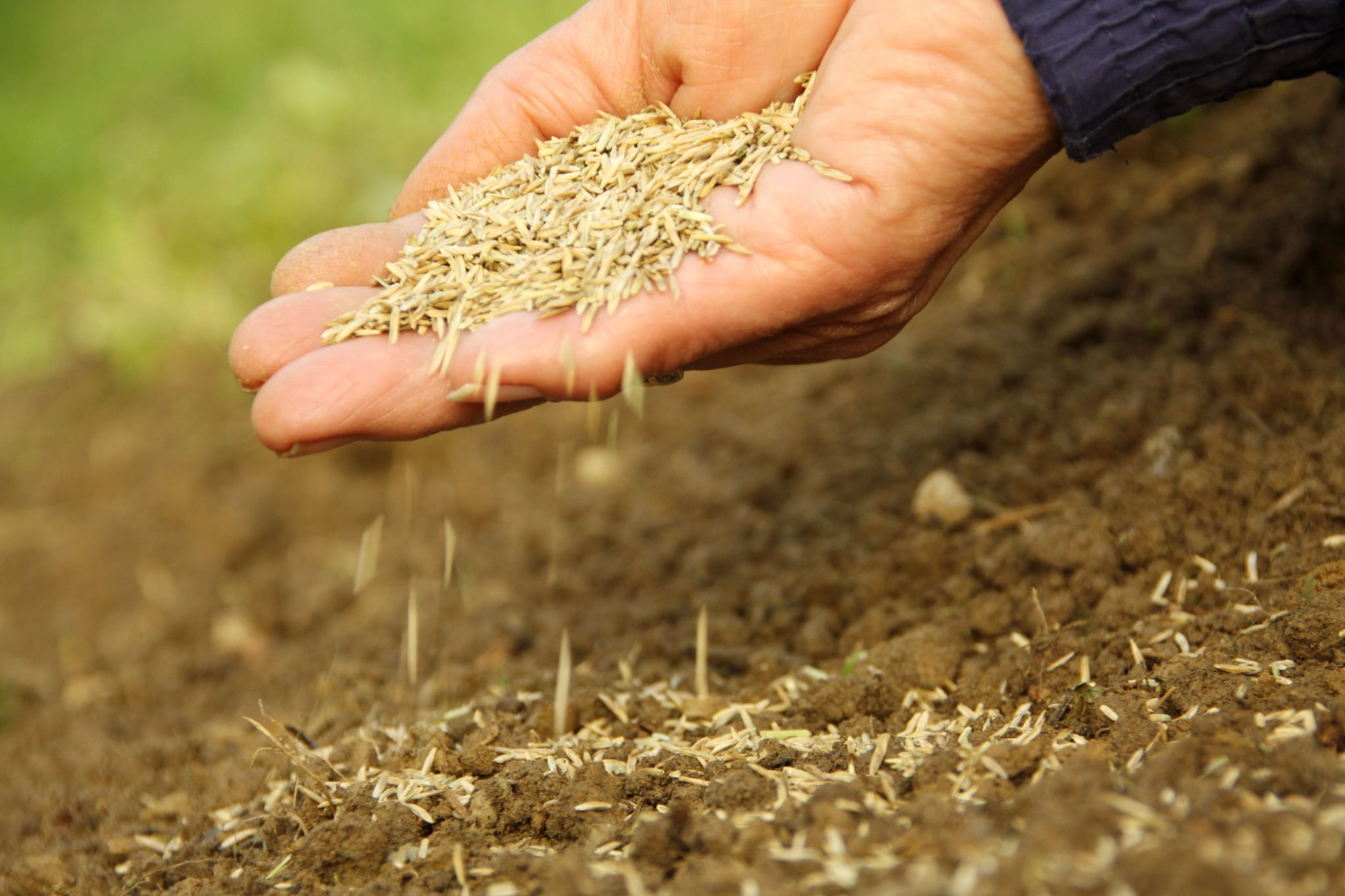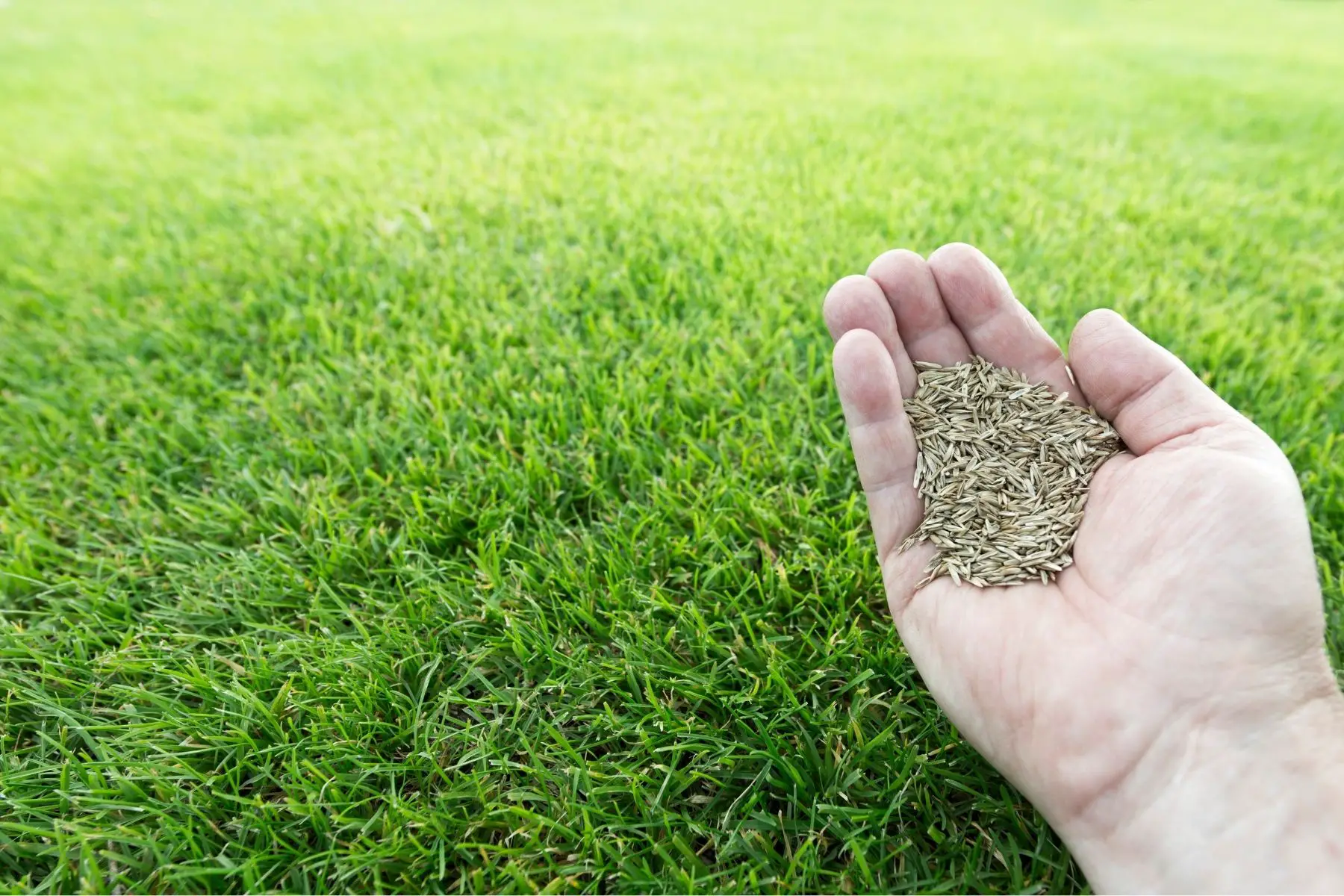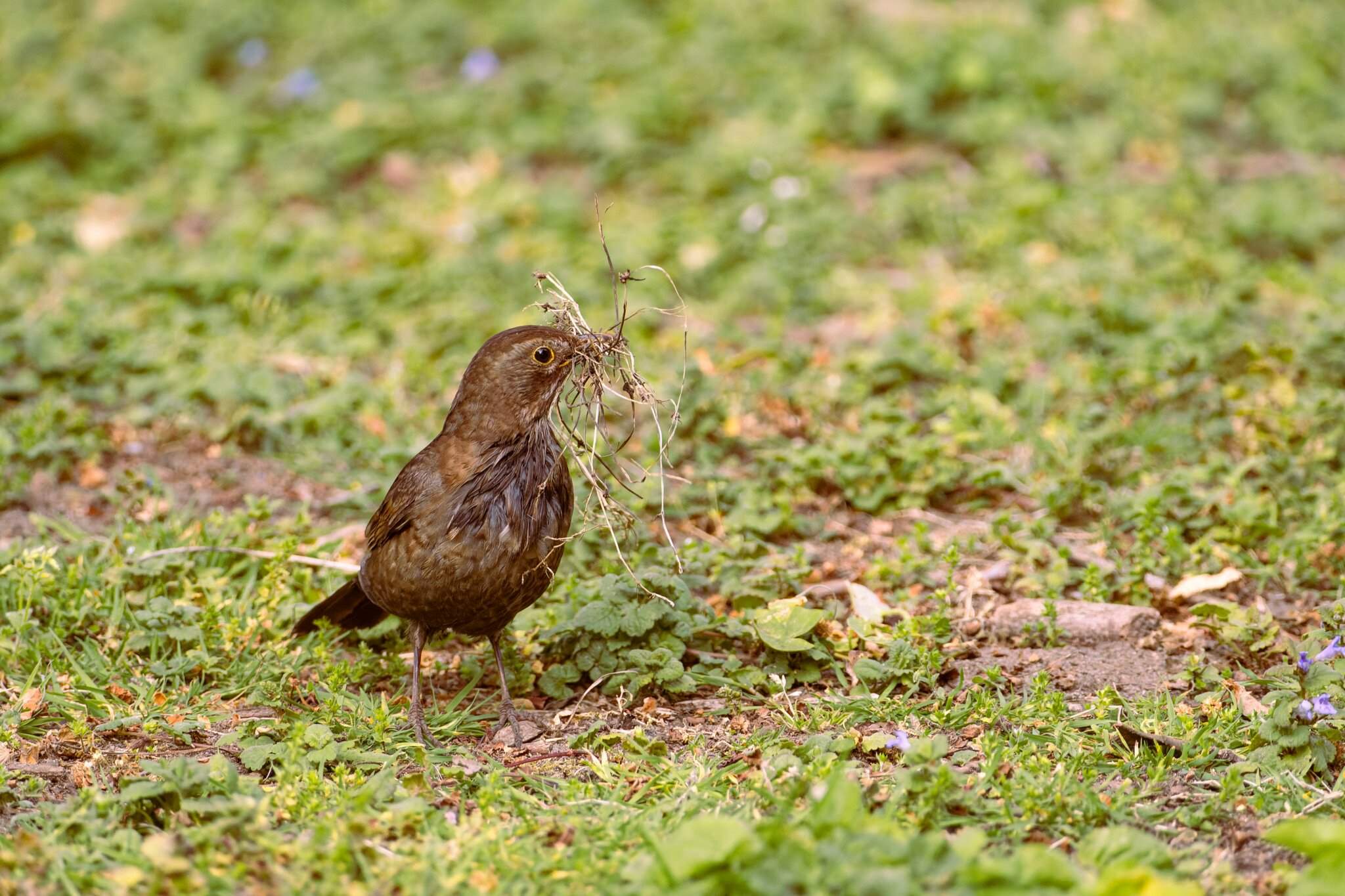Home>Gardening Tips and Tricks>Problem Solving>When To Water New Grass Seeds
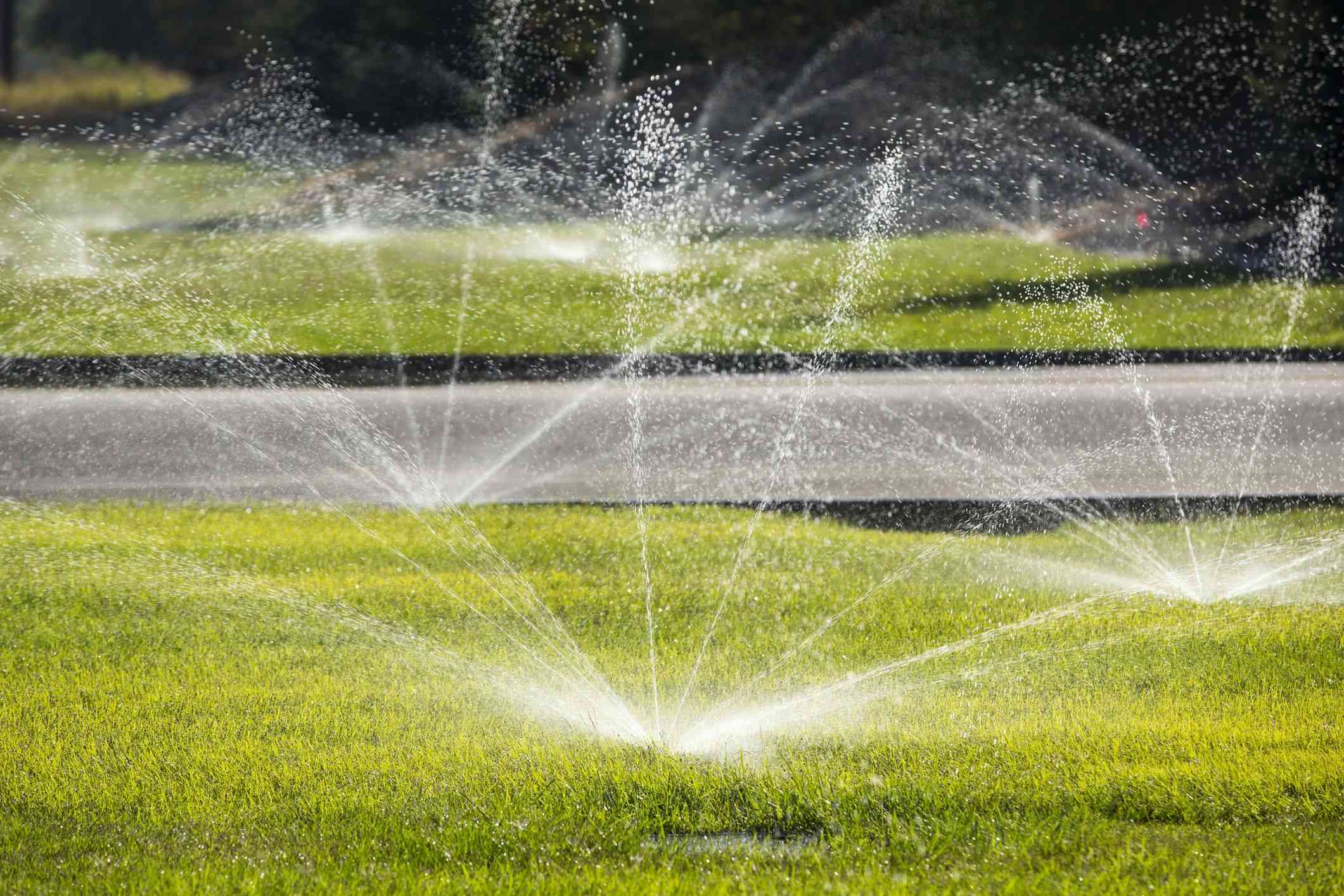

Problem Solving
When To Water New Grass Seeds
Modified: February 6, 2024
Learn when to water new grass seeds and solve any problems. Discover tips for optimal watering to ensure successful growth.
(Many of the links in this article redirect to a specific reviewed product. Your purchase of these products through affiliate links helps to generate commission for Chicagolandgardening.com, at no extra cost. Learn more)
Table of Contents
Introduction
Watering new grass seeds is a crucial step in establishing a lush and healthy lawn. Proper watering techniques ensure that the seeds germinate, roots develop, and the grass grows strong. However, it’s important to understand that watering new grass seeds requires careful attention and a strategic approach.
When it comes to watering new grass seeds, there are several factors to consider. These include the time of day to water, the frequency of watering, the amount of water needed, and the watering techniques employed. By understanding these factors and following best practices, you can help your newly planted grass seeds thrive.
Overwatering or underwatering new grass seeds can have detrimental effects on their growth. Too much water can drown the seeds, leading to rot and fungal diseases, while too little water can cause the seeds to dry out and fail to germinate. Finding the right balance is essential for successful establishment and growth.
In this article, we will explore the factors to consider when watering new grass seeds, the best time of day to water, the frequency of watering, effective watering techniques, and how to identify signs of overwatering and underwatering. By following these guidelines, you can ensure that your newly seeded lawn gets off to the best possible start and flourishes into a beautiful and vibrant landscape.
Factors to Consider
When watering new grass seeds, there are several important factors that you need to take into account to ensure optimal growth and establishment. Understanding and addressing these factors will help you create the ideal conditions for your grass seeds to thrive.
1. Soil Type: Different soil types have varying water retention capacities. Sandy soil drains quickly, while clay soil retains moisture for longer periods. Take into consideration the soil type in your lawn and adjust your watering accordingly. Sandy soil may require more frequent watering, while clay soil may need less frequent but deeper watering.
2. Seed Type: Different grass seed varieties have different water requirements. It’s essential to familiarize yourself with the specific needs of the grass seed you’ve chosen. Some seeds may require more water during germination, while others may be more drought-tolerant.
3. Weather Conditions: The weather plays a significant role in how often and how much you need to water new grass seeds. Hot and dry conditions may require more frequent watering, while cooler and wetter conditions may necessitate less frequent watering. Pay attention to the current weather and adjust your watering schedule accordingly.
4. Stage of Growth: The watering needs of new grass seeds change as they progress through different growth stages. Initially, during germination, the seeds need consistent moisture to sprout. As the grass starts to develop, you can gradually reduce the frequency of watering while increasing the amount of water applied.
5. Water Availability: Take into account the availability of water resources, especially if you rely on well water or have water restrictions in your area. If water is limited, it’s crucial to find a balance between conserving water and providing enough moisture for the grass seeds to establish.
By considering these factors, you can tailor your watering approach to the specific needs of your lawn. This will create an optimal environment for your new grass seeds to grow and thrive, resulting in a healthier and more vibrant lawn.
Time of Day to Water
The timing of watering can have a significant impact on the success of new grass seed growth. Choosing the right time of day to water is crucial to ensure that the grass seeds receive adequate moisture without excess evaporation or prolonged periods of moisture that can lead to fungal diseases.
The ideal time to water new grass seeds is early in the morning or late in the afternoon. During these times, temperatures are generally cooler, and there is less sunlight and wind, reducing the risk of evaporation. Additionally, watering in the morning allows the grass blades to dry out during the day, which helps prevent fungal growth and diseases.
Avoid watering new grass seeds in the evening or at night. Watering during these times can result in prolonged moisture on the grass blades, creating a favorable environment for fungal diseases to develop. It’s best to give the grass blades sufficient time to dry out before nightfall.
If mornings and afternoons are not feasible, watering in the late evening, at least two hours before sunset, can be an alternative. However, be cautious not to water excessively, as this can still create excessive moisture on the grass blades and increase the risk of fungal diseases.
Remember to also consider the weather conditions when deciding on the time of day to water. If it’s extremely hot and dry, watering in the early morning can provide the grass seeds with the necessary moisture to withstand the day’s heat. On the other hand, if the weather is cooler and more humid, late afternoon watering may be more suitable.
By watering your new grass seeds at the right time of day, you can maximize water absorption, minimize evaporation, and reduce the risk of fungal diseases. This will create a favorable environment for the seeds to germinate, roots to develop, and the grass to grow strong and healthy.
Frequency of Watering
The frequency of watering new grass seeds is a critical aspect of establishing healthy growth. Finding the right balance between providing enough moisture for the seeds to germinate and avoiding overwatering is key to successful lawn establishment.
During the germination stage, it’s crucial to keep the soil consistently moist. This means watering lightly and frequently to prevent the seeds from drying out. Depending on the temperature and soil conditions, you may need to water daily or even multiple times a day to ensure the top layer of soil remains moist.
As the grass begins to grow, you can gradually reduce the frequency of watering. This allows the roots to start reaching deeper into the soil and promotes stronger growth. Instead of light and frequent watering, switch to more thorough and less frequent watering sessions.
On average, newly seeded lawns may require watering every 2-3 days. However, it’s essential to pay attention to the soil moisture level and adjust the watering frequency accordingly. Use a moisture meter or simply dig a small hole in the soil to check how deep the moisture has penetrated.
Factors such as weather conditions, soil type, and seed variety can also influence the frequency of watering. During hot and dry weather, or if you have sandy soil that drains quickly, you may need to water more frequently. Conversely, cooler and more humid weather or clay soil with good water retention may require less frequent watering.
Remember that overwatering can be just as detrimental to new grass seeds as underwatering. It can lead to shallow root development, increased susceptibility to diseases, and even rot. Allow the soil to dry out slightly between watering sessions to encourage the roots to grow deeper and promote a stronger, more resilient lawn.
By gradually adjusting the frequency of watering as your new grass seeds grow, you can encourage healthy root development and establish a strong and thriving lawn.
Watering Techniques
The way you water your new grass seeds can greatly impact their growth and overall health. Here are some effective watering techniques to ensure optimal water distribution and encourage strong root development:
1. Gentle Watering: Use a gentle spray or misting attachment on your hose or sprinkler to avoid disturbing the soil or washing away the seeds. High-pressure watering can dislodge the seeds or create ruts in the soil, compromising their germination and growth.
2. Even Coverage: Aim for even coverage when watering to ensure that all areas receive adequate moisture. Pay extra attention to any bare spots or areas where the seeds may be less concentrated.
3. Deep Watering: Water deeply to encourage the roots to grow deeper into the soil. Shallow watering promotes shallow root growth, making the grass more susceptible to drought stress. Aim to moisten the top 6-8 inches of soil during each watering session.
4. Watering Duration: The length of time you water will depend on the soil type and water absorption rate. Generally, aim for about 15-20 minutes of watering per session. However, if you notice runoff or pooling water, stop watering and allow the soil to absorb the moisture before continuing.
5. Avoid Overwatering: While providing adequate moisture is crucial, it’s important to avoid overwatering. Overwatering can lead to shallow root growth, nutrient leaching, and increased susceptibility to diseases. Monitor the soil moisture level and adjust your watering frequency accordingly.
6. Mulch: Consider applying a thin layer of mulch, such as straw or hay, to help retain moisture in the soil and protect the seeds from extreme temperatures. Mulch can also help prevent erosion and conserve water.
7. Irrigation System: If you have a larger lawn, consider installing an irrigation system. This allows for automated and consistent watering, ensuring that your new grass seeds receive the necessary moisture while minimizing manual efforts.
By employing these watering techniques, you can ensure that your new grass seeds receive the right amount of water, promote deep root growth, and establish a healthy and resilient lawn.
Signs of Overwatering
Overwatering can be just as detrimental to new grass seeds as underwatering. It’s essential to be able to recognize the signs of overwatering so that you can take corrective action and prevent damage to your lawn. Here are some common signs to watch out for:
1. Pooled Water: If you notice areas of standing water or excessive pooling after watering, it’s a clear indication of overwatering. This can lead to waterlogged soil, suffocating the roots and creating an environment conducive to fungal growth.
2. Mushy or Spongy Soil: Overwatered soil tends to become mushy or spongy to the touch. This is a result of the excess water saturating the soil and displacing air, making it difficult for the roots to access oxygen.
3. Yellowing or Wilting Grass: While it may seem counterintuitive, overwatering can cause the grass blades to turn yellow or begin wilting. This is because the excessive moisture prevents oxygen from reaching the roots, leading to stress and ultimately damaging the grass.
4. Fungal Diseases: Overwatering provides the ideal conditions for fungal diseases to thrive. If you notice the presence of molds, mildew, or a musty smell in your lawn, it may be a sign of overwatering. Common fungal diseases include dollar spot, brown patch, and pythium blight.
5. Weed Growth: Overwatering can promote the growth of weeds in your lawn. Weeds, particularly those of the broadleaf variety, thrive in moist and soggy conditions. Be vigilant and take action if you notice an increase in weed growth.
6. Patches of Thin or Bald Grass: Overwatering can lead to shallow root development, making the grass more susceptible to damage and thinning. If you see patches of thin or bald grass despite consistent watering, it may indicate overwatering in those areas.
It’s important to address signs of overwatering promptly to prevent further damage to your new grass seeds. If you suspect overwatering, adjust your watering schedule and allow the soil to dry out slightly before the next watering session. Increasing the interval between watering sessions can help the roots develop deeper and encourage a healthier, more resilient lawn.
Signs of Underwatering
Underwatering can have detrimental effects on the growth and health of new grass seeds. It’s important to be able to identify the signs of underwatering so that you can take appropriate measures to ensure your lawn receives adequate moisture. Here are some common signs of underwatering to watch out for:
1. Dry and Cracked Soil: One of the most obvious signs of underwatering is dry and cracked soil. If the soil in your lawn appears parched and brittle, it’s a clear indication that your grass seeds are not receiving enough water.
2. Discoloration: Underwatered grass may start to display signs of discoloration. The blades may turn a pale, yellowish color or develop brown patches. This is a defense mechanism as the grass tries to conserve energy and protect itself from further water loss.
3. Slow Growth: Insufficient water can significantly slow down the growth of new grass seeds. If you notice that your lawn is not progressing as expected or that the grass is growing at a much slower rate, it may be an indication that your lawn is not receiving enough water.
4. Wilting: As the grass blades lose moisture, they may start to wilt. This is most noticeable during the hottest part of the day when the grass is unable to retain adequate hydration. Wilting is a sign that your lawn is in need of watering.
5. Increased Pest Activity: Underwatered grass becomes stressed and more susceptible to pest infestations. If you notice an influx of pests such as insects, grubs, or surface-feeding animals like birds or raccoons, it may be a sign that your lawn is not receiving enough water.
6. Thinning and Patchy Grass: When grass does not receive enough water, it can lead to thinning and patchy areas in the lawn. The weakened grass plants struggle to grow and fill in the spaces, resulting in an uneven and sparse lawn appearance.
If you observe these signs of underwatering, it’s important to adjust your watering schedule and provide your grass seeds with the moisture they need. Increase the frequency and duration of your watering sessions to ensure that the soil is adequately moistened. However, be careful not to overwater and find the right balance to promote healthy growth and avoid water-related issues.
Conclusion
Watering new grass seeds is a critical step in establishing a vibrant and healthy lawn. By considering factors such as soil type, seed variety, weather conditions, and growth stage, you can tailor your watering approach to meet the specific needs of your lawn. Time of day plays a crucial role, with early mornings and late afternoons being the ideal times to water to prevent evaporation and fungal diseases.
Understanding the signs of overwatering and underwatering is essential to ensure your lawn receives the right amount of moisture. Overwatering can lead to shallow root growth, fungal diseases, and nutrient leaching. On the other hand, underwatering can result in dry and unhealthy grass, slow growth, and increased pest activity.
By employing proper watering techniques such as gentle watering, even coverage, deep watering, and monitoring soil moisture levels, you can encourage strong root development and establish a resilient lawn. Adjusting the watering frequency as your grass seeds grow helps them develop deep roots and withstand drought conditions.
Remember, finding the right balance is key. Aim to provide consistent moisture without overwatering, allowing the soil to dry slightly between watering sessions. By following these guidelines, you can create the optimal conditions for your new grass seeds to germinate, grow, and develop into a lush and beautiful landscape.
